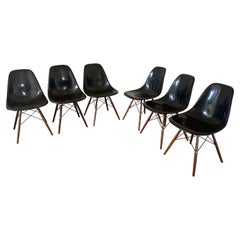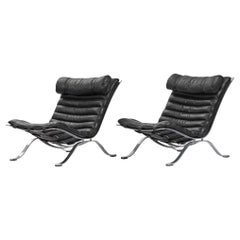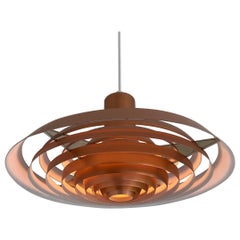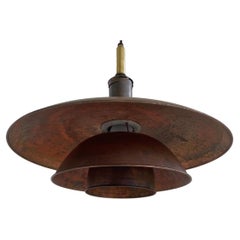About Zitzo Modern Design
Established by Gooitsen Postma in 2000. Zitzo Gallery specializes in rare, original works of Danish furniture designed during 1920-70. We also represent other contemporary European and American designers and architects who were ahead of their time. We have a restoration and a upholstery collaboration with professional skilled craftsmen, photography studio and showroom/gallery. No item leaves our showroom before it is completely checked by our craftsman. The expertise of our craftsmen guarantees that everything that leaves our company would surpass our clients expectati...Read More

Established in 20001stDibs seller since 2023
Featured Pieces
Charles Eames DSW dining chairs in black fiberglass by Herman Miller 1970s
By Herman Miller, Charles Eames
Located in WIJCKEL, NL
A beautiful set of six fiberglass DSW chairs designed by Charles and Ray Eames for Herman Miller. Offered in black color.
One of the most recognized designs of the early modern desi...
Category
Vintage 1970s American Mid-Century Modern Dining Room Chairs
Materials
Metal
Arne Norell pair of ‘Ari’ Lounge Chair in Original Black Leather Sweden, 60s
By Norell Möbel AB, Arne Norell
Located in WIJCKEL, NL
Pair of comfortable lounge chair designed by Arne Norell. This award winning lounge chair is made of high quality matt polished steel and original black leather. The set is in nice v...
Category
Vintage 1960s Swedish Scandinavian Modern Lounge Chairs
Materials
Steel
Midcentury Poul Henningsen Copper Pendant Langelinie Louis Poulsen Denmark 1950s
By Poul Henningsen, Louis Poulsen
Located in WIJCKEL, NL
Beautiful and rare Poul Henningsen pendant lamp for Louis Poulsen designed in 1958 for the Langelinie Pavillion in Copenhagen. Nine circul...
Category
Vintage 1950s Danish Scandinavian Modern Chandeliers and Pendants
Materials
Metal, Copper
Large Poul Henningsen Pendant 'Patented' in Copper, L. Poulsen Denmark 1930s
By Poul Henningsen, Louis Poulsen
Located in WIJCKEL, NL
Rare and Large PH Pendant in copper and brass, designed by Poul Henningsen and manufactured by Louis Poulsen.
Early model. Stamped 'Patented'
Pendant with three shades that gives a ...
Category
Vintage 1930s Danish Scandinavian Modern Chandeliers and Pendants
Materials
Metal, Brass, Copper
Poul Kjaerholm PK 80 daybed black leather E. Kold Christensen Denmark 1960s
By Poul Kjærholm, E. Kold Christensen
Located in WIJCKEL, NL
PK 80 was one of the most sophisticated works from this period by Kjaerholm. Its striking proportions, the elegance of its materials and connections, and the beauty of the large welt...
Category
Vintage 1960s Danish Scandinavian Modern Daybeds
Materials
Metal
Italian Circle Scone Wall lights by Rosario Hurtado and Roberto Feo, model Guau
Located in WIJCKEL, NL
Put light and shadow at play with this cool decorative scone or wall lamp. The "Guau" mood creating lamp will look great solo, as a pair or in groups, illuminating your space while e...
Category
Vintage 1980s Spanish Post-Modern Wall Lights and Sconces
Materials
Metal
Kaare Klint Sofa # 5011 in Original Cognac Leather Rud Rasmussen, Denmark 1940s
By Rud Rasmussen, Kaare Klint
Located in WIJCKEL, NL
Two-seater sofa model 5011 in original cognac leather and six-legged mahogany base. Produced by Rud. Rasmussen Cabinetmakers, Denmark. Minor marks on the frame, patina to the leather. Back covered in original canvas.
Shown at the Copenhagen Cabinetmakers’ Guild exhibition in 1935. Signed with manufacturer’s label to underside: (Rud. Rasmussens Snedkerier).
Kaare Klint is widely recognized as the father of Danish modern design. It is hard to overstate his influence. He developed an entirely new analytical approach to furniture design that his students at the Danish Academy of Art would emulate for years to come, yet was also inspired by historic designs from various cultures, modernizing and re-interpreting classic pieces for new generations.
Literature: Gorm Harkær, Klintiana: “Kaare Klint”, vol.2, pg 94.
Kaare Klint (1888-1954) is regarded as the founding father of Danish Modernim. As an architect, furniture designer and leading professor at the Department of Furniture Design at the Royal Danish Academy of Fine Arts, Copenhagen, Klint established the principles of modern Danish furniture by combining a profound appreciation of traditional construction techniques with a modernist emphasis on function and a rejection of ornaments.
Klint’s design was always based on relentless research; he never compromised. Every piece had to fulfill its purpose, be completely clear in its construction with dimensions and proportions corresponding to the human body and display materials and craftsmanship of the highest quality. Logic, often using a mathematical system of measures, and a constructive way of thinking were the foundation of Klint’s philosophy of furniture design. Like many of his contemporaries, counting Le Corbusier and Walter Gropius, he advocated standardization and functional requirements and dismissed the use of all ornamentation. But Klint realized his vision in wood and leather, using traditional craftsmen and working methods and often finding inspiration in historical models. In this way, he charted the course for an alternative Nordic Functionalism that idealized the workshop and the collaboration between furniture architects and cabinetmakers as opposed to the factory.
Kaare Klint’s first major work was a collaboration with his mentor, the architect Carl Petersen. In 1914 they were commissioned to design furniture and fixtures for Faaborg Art Museum. One of the highlights to emerge from this commission was the Faaborg chair, a light and elegant chair with clear references to classical furniture. The construction and proportions of an 18th century English Chippendale chair was also clearly visible in the famous Red Chair, designed in 1927 for the lecture hall at The Museum of Arts and Crafts (now Design Museum Denmark), but with its straight back deprived of all unnecessary decoration and its beautiful Niger leather, the Red Chair was far from an imitation. Other important works include The Propeller Stool (1927), The ‘Mix Chair’ designed in collaboration with his pupil Edvard Kindt-Larsen in 1930, the Safari Chair (1930), The Deck Chair (1939 and The Church Chair designed in 1936 for the Bethlehem Church in Copenhagen. Also noteworthy are Klint’s well-proportioned cabinets and wardrobes...
Category
Vintage 1940s Danish Scandinavian Modern Sofas
Materials
Leather, Mahogany
Exhibition poster Hans Coray Design 20th century Design Museum Denmark
Located in WIJCKEL, NL
Here is a very rare and desirable vintage exhibition poster from the Danish Design Museum Denmark, Copenhagen. The image presented the Landi chair by the Designer Hans Coray.
The exh...
Category
1990s Danish Scandinavian Modern Posters
Materials
Paper
Pair of Børge Mogensen Spanish Chairs for Fredericia Stolefabrik Denmark 1960s
By Fredericia Stolefabrik, Børge Mogensen
Located in WIJCKEL, NL
A pair of Borge Mogensen’s iconic Spanish Chairs for Fredericia Stolefabrik, Denmark in original cognac leather. Pair has been lovingly cared for and is distinguished by it’s own age...
Category
Vintage 1960s Danish Scandinavian Modern Armchairs
Materials
Brass
Armchairs in off-white from Charles Eames for Herman Miller Mid-Century Modern
By Herman Miller, Charles Eames
Located in WIJCKEL, NL
A nice set of four fiberglass armchairs designed by Charles and Ray Eames for Herman Miller. Offered in off-white color.
The height of the armrests is 65 cm / 25.59 inch.
One of the most recognized designs of the early modern design movement. The Eames' are known for their groundbreaking designs and production processes. These chairs are perfect examples of efficient use of material and ergonomic design.
These chairs are quite comfortable. Labels in tact on two of the four chairs.
The Eames Molded Plastic...
Category
Mid-20th Century American Mid-Century Modern Armchairs
Materials
Metal
Dieter Rams Design Promotion poster for Handle program or Griffprogramm 1986
Located in WIJCKEL, NL
Here is a very rare and desirable vintage Promotional drawing poster displaying detail handle program by the German designer Dieter Rams for FSB 1986.
This poster is printed on both ...
Category
Vintage 1980s German Mid-Century Modern Posters
Materials
Paper
Fritz Hansen Furniture poster for Arne Jacobsen models butterfly chair Danish
By Arne Jacobsen, Fritz Hansen
Located in WIJCKEL, NL
Here is a very rare and desirable Furniture poster by the Danish designer Arne Jacobsen for Fritz Hansen representing the serie 7 chair or butterfly chair in a variety of different c...
Category
20th Century Danish Scandinavian Modern Posters
Materials
Paper



